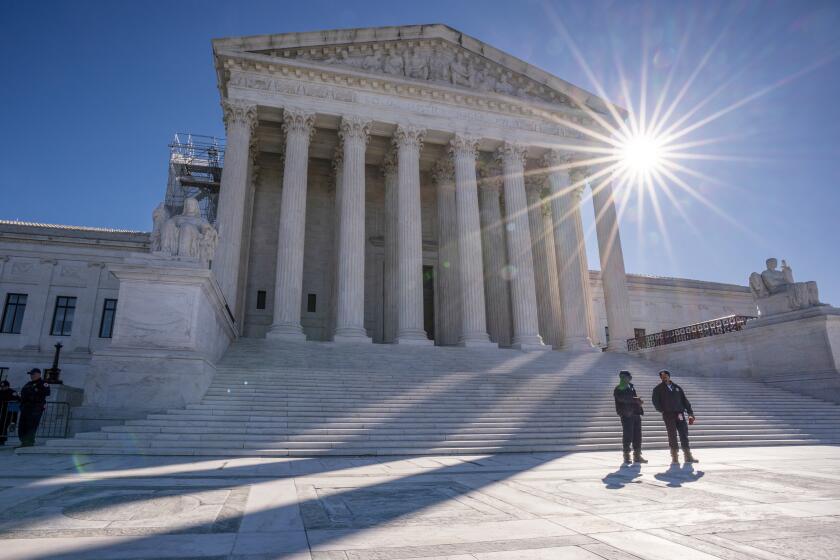Photos:: Tibetans in Aba, China
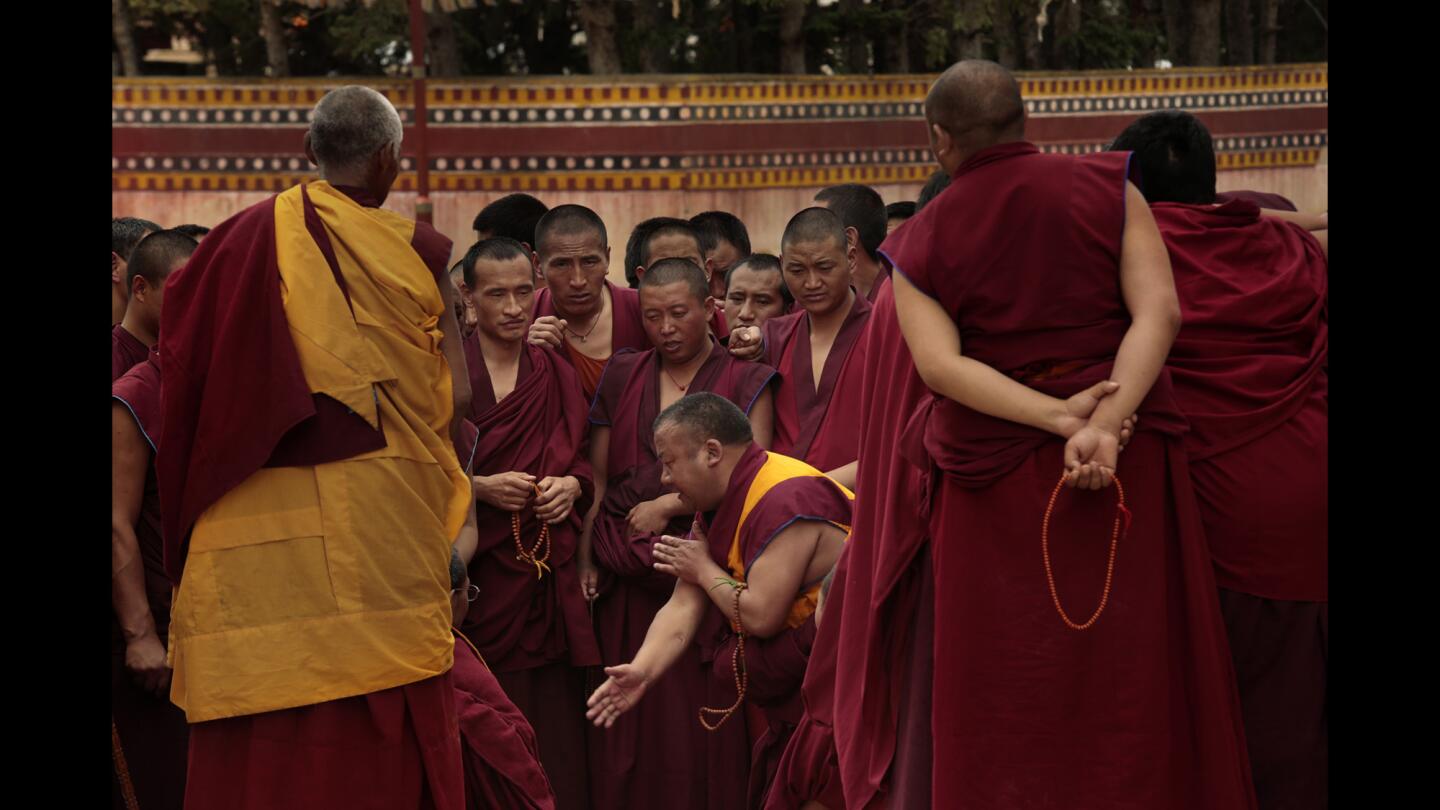
Monks gather for debates in the courtyard at Kirti Monastery in Aba, in Sichuan province.
(Carolyn Cole / Los Angeles Times)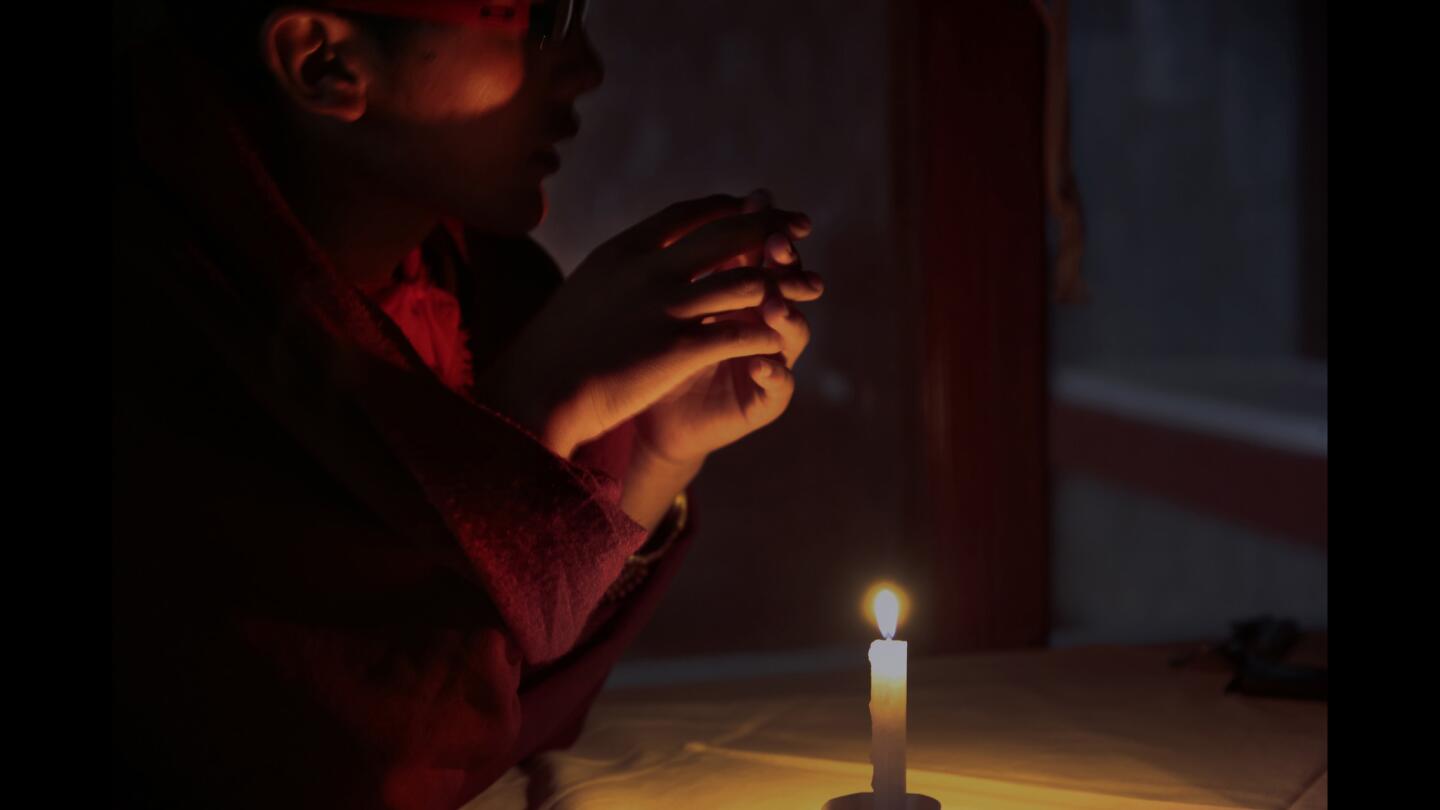
Dongtuk, a Tibetan monk now living in Dharamsala, India, considered self-immolation after his best friend committed suicide by that method, as many Buddhists have in acts of protest against the Chinese government.
(Carolyn Cole / Los Angeles Times)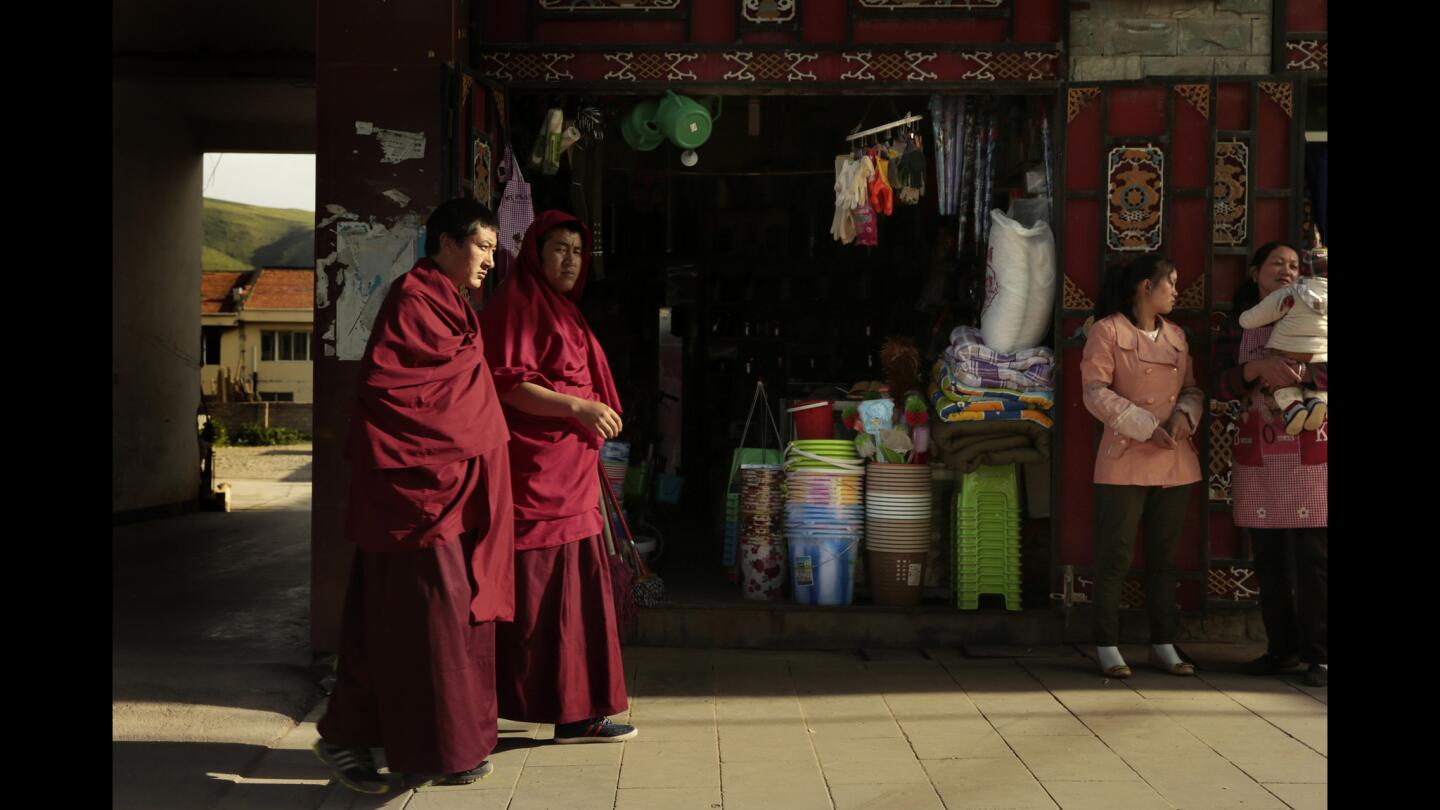
Monks walk along the main road in Aba, where many of the businesses are owned and operated by non-Tibetan Chinese.
(Carolyn Cole / Los Angeles Times)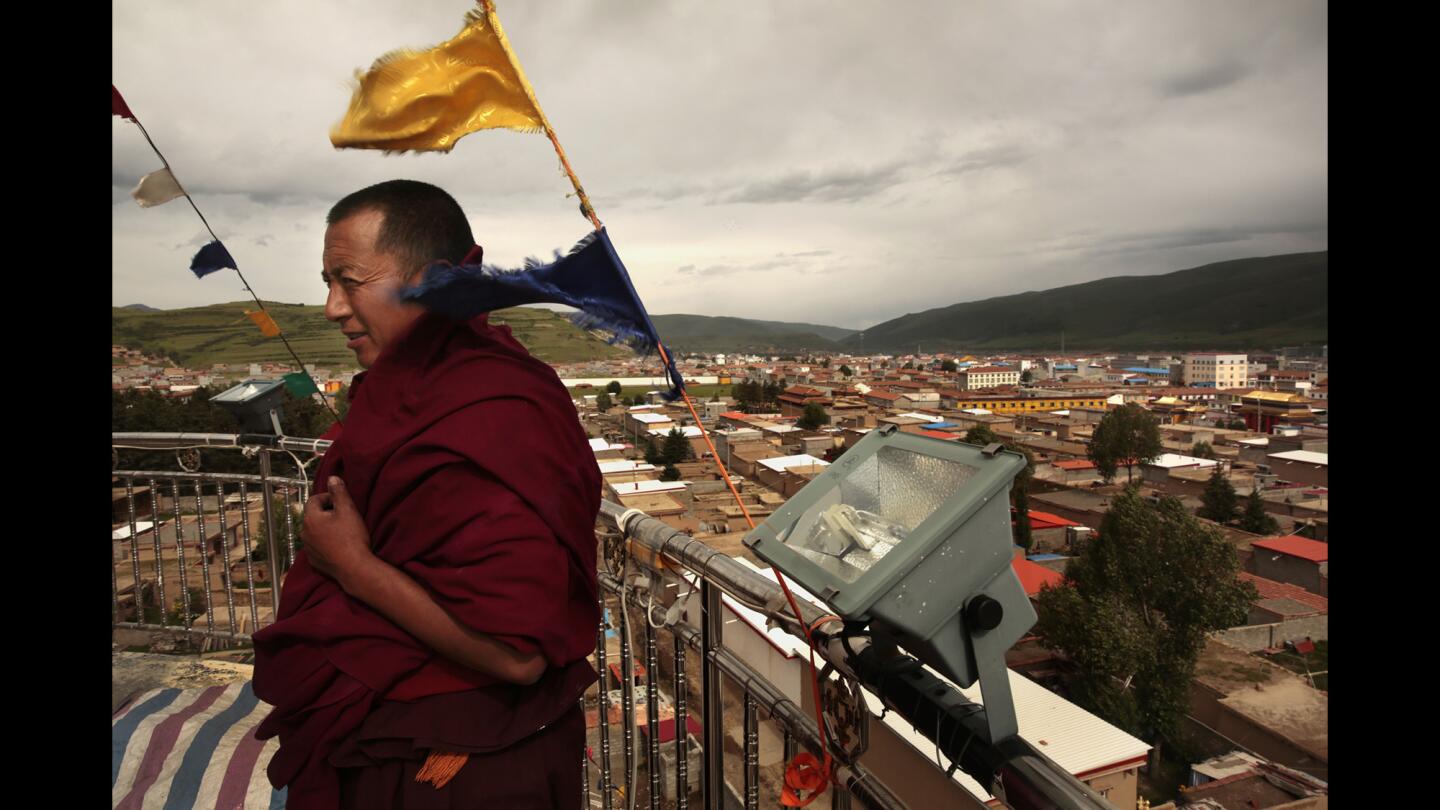
Kirti Gompa is one of the Tibetan Buddhist monasteries in China’s Sichuan province.
(Carolyn Cole / Los Angeles Times)Advertisement
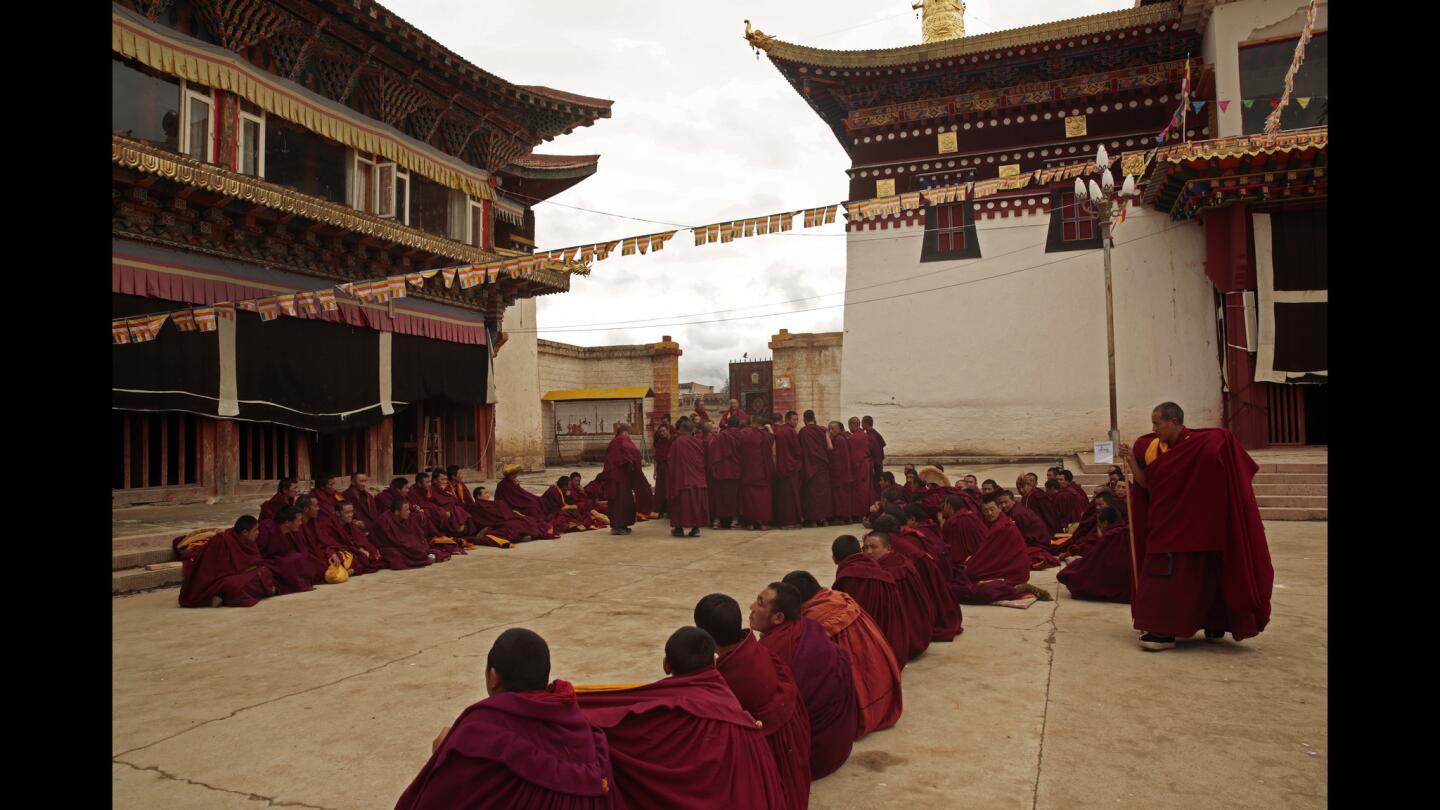
Tibetan Buddhist monks gather at Kirti Monastery, founded in 1472, in Aba, China.
(Carolyn Cole / Los Angeles Times)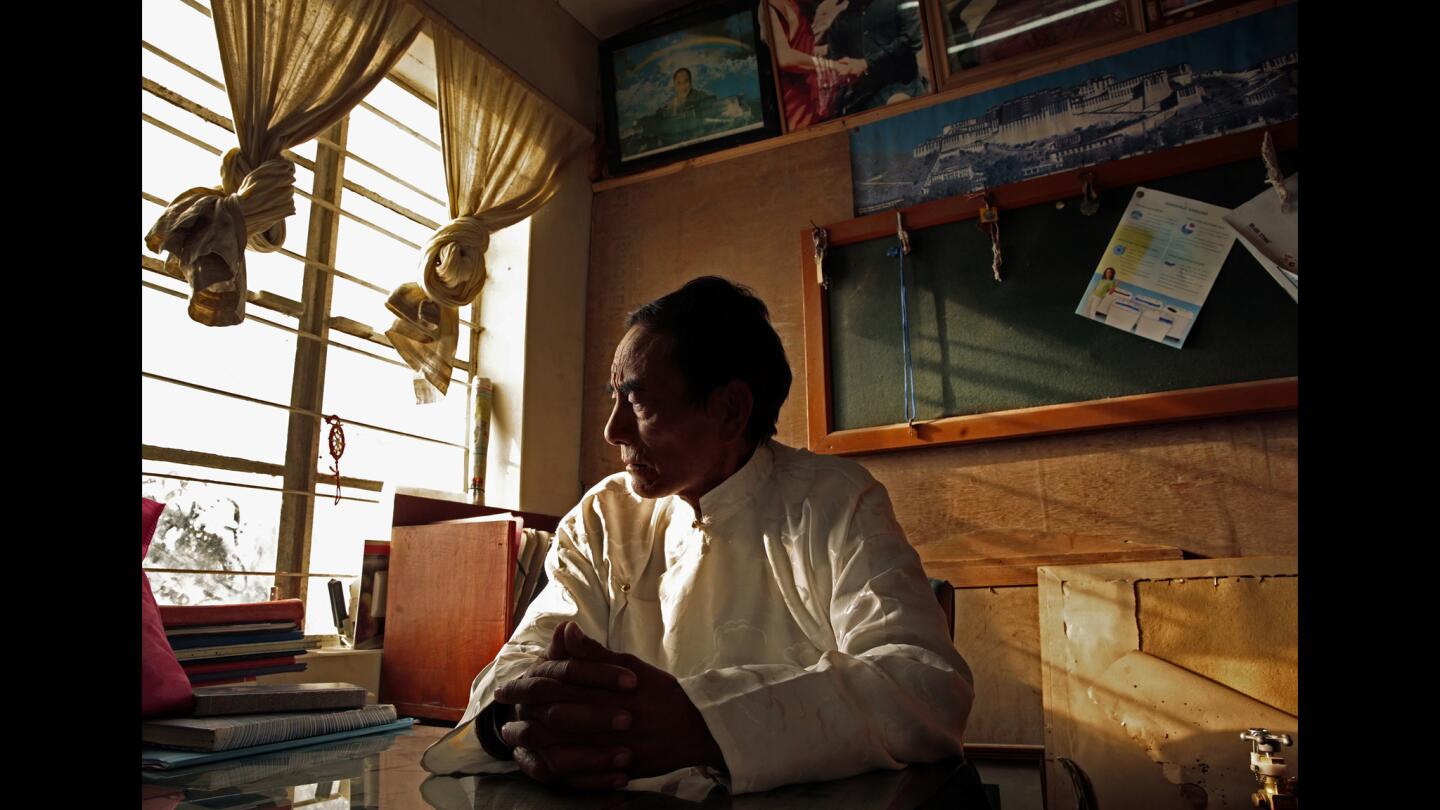
Amdo Delek is an amateur historian working as a custodian at a Tibetan exile school in Dharamsala, India.
(Carolyn Cole / Los Angeles Times)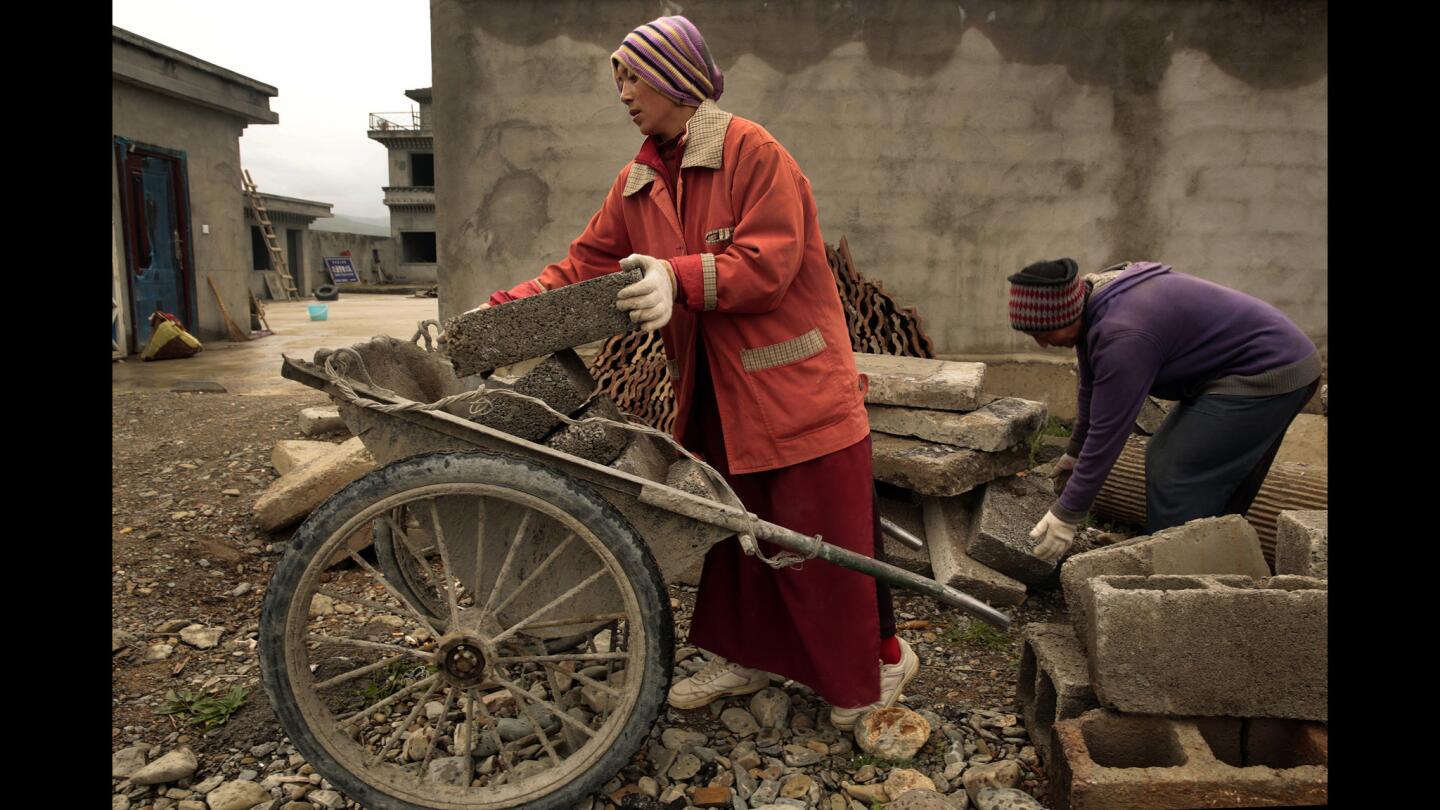
Yang Jin, 32, a Buddhist nun since the age of 19, left, and Sang Jijie, 39, make a living as construction workers. Tibetans earn half as much as Chinese majority ethnic Han workers.
(Carolyn Cole / Los Angeles Times)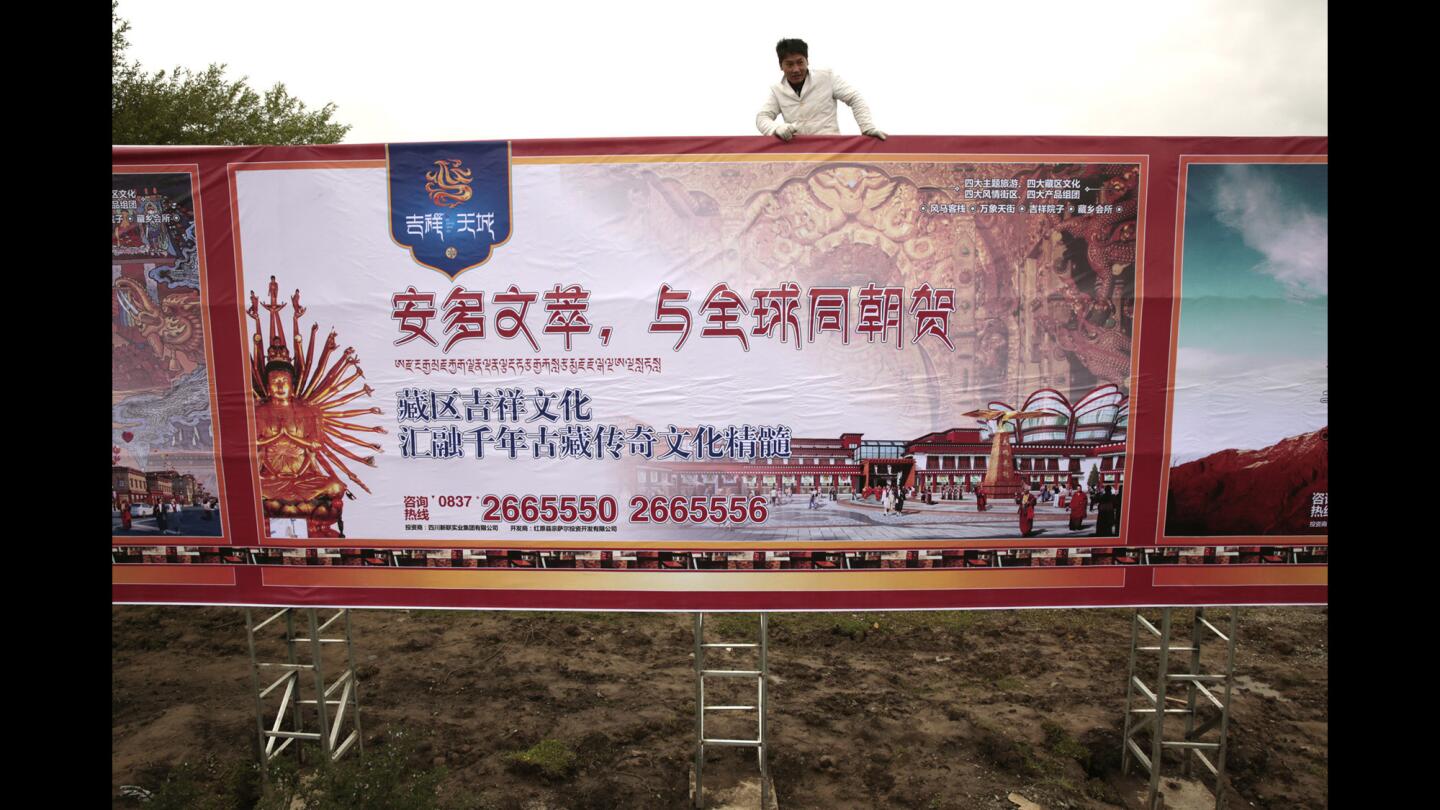
In Aba, advertisements tout a new housing development. The Chinese government is urging nomads to settle in communities where they have access to housing, healthcare and other services.
(Carolyn Cole / Los Angeles Times)Advertisement
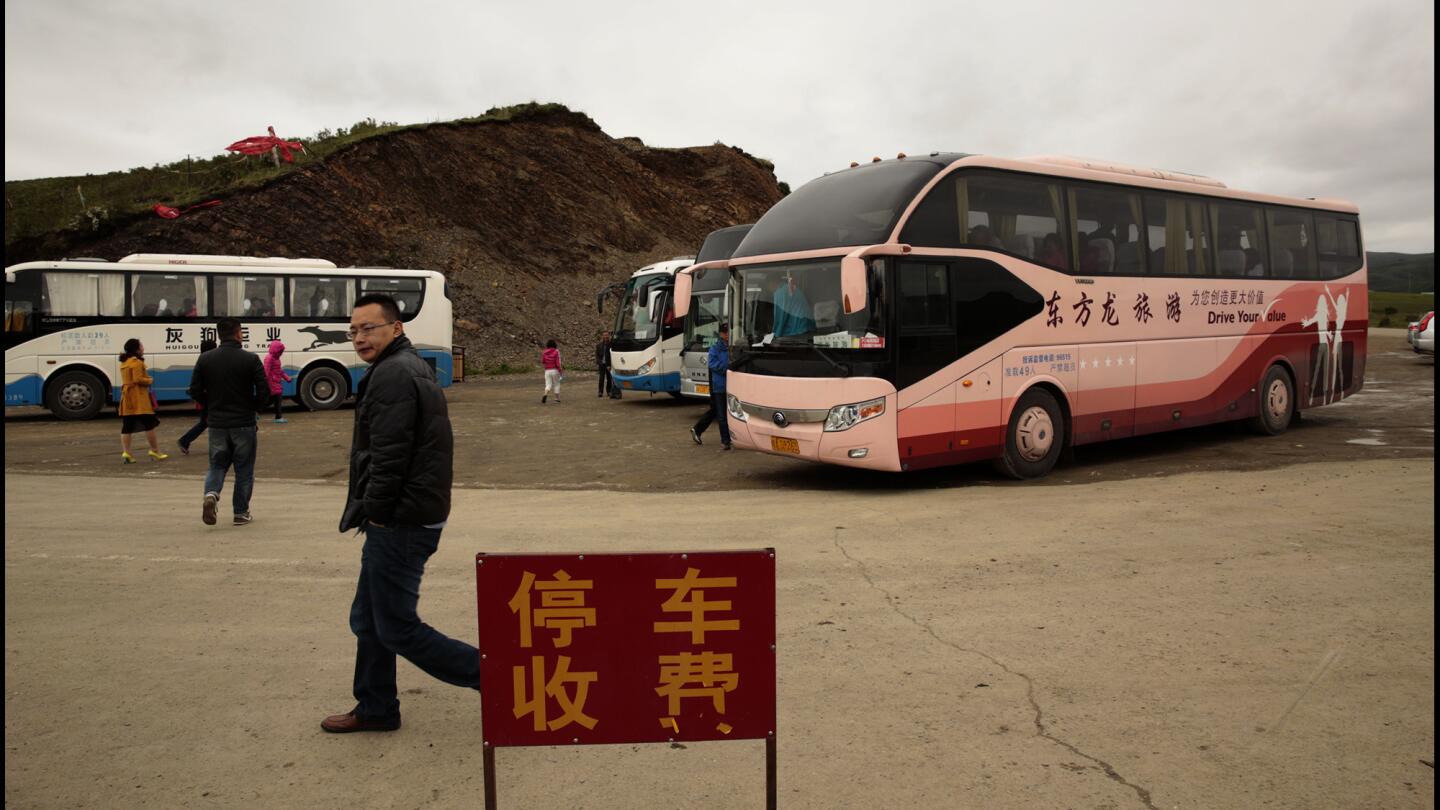
Tour buses deliver visitors to an overlook in Aba for a glimpse of the Tibetan plateau. Unlike the majority Han Chinese, Tibetans face travel restrictions.
(Carolyn Cole / Los Angeles Times)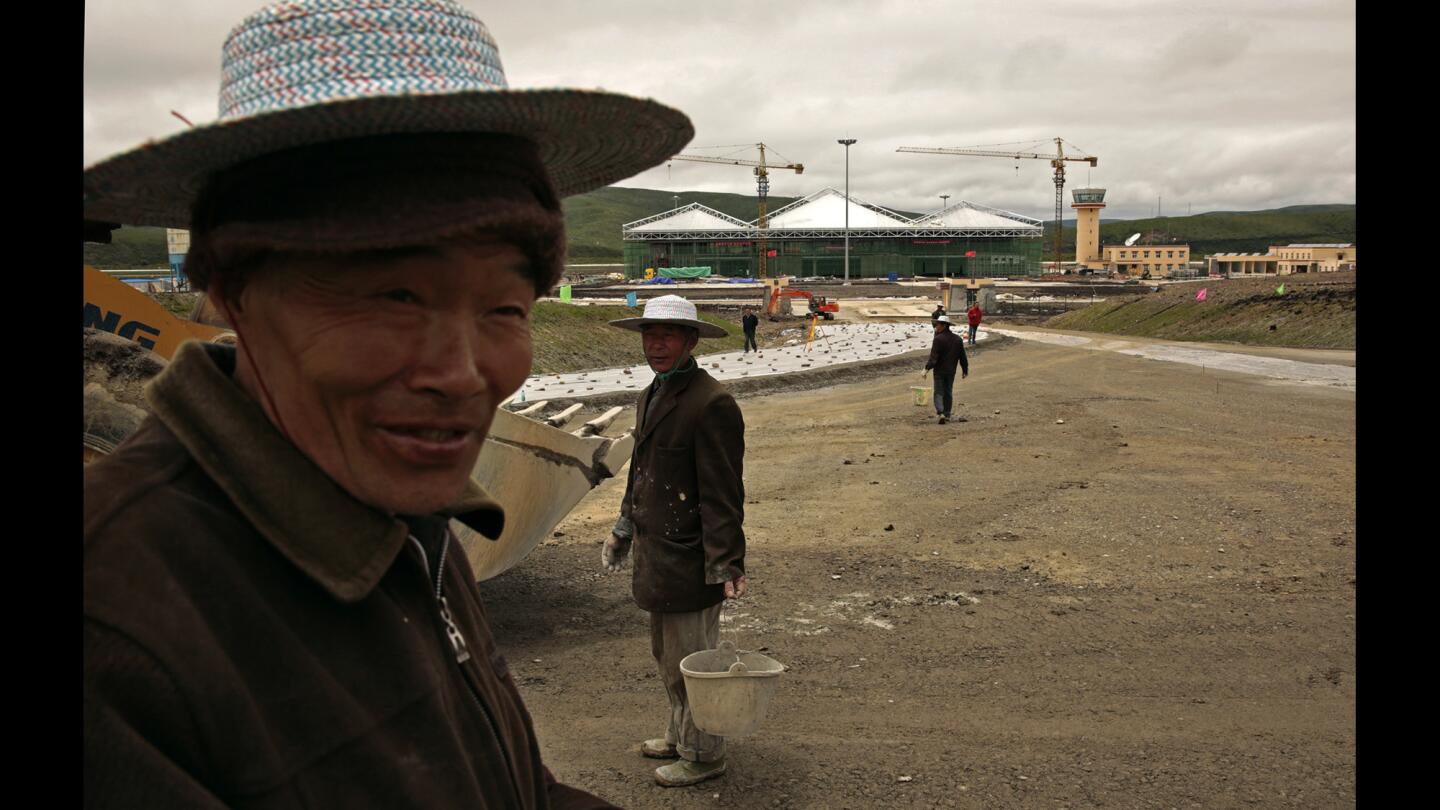
In the Hongyuan area of Aba prefecture, construction is underway on a new airport to serve increased Chinese tourism to the area.
(Carolyn Cole / Los Angeles Times)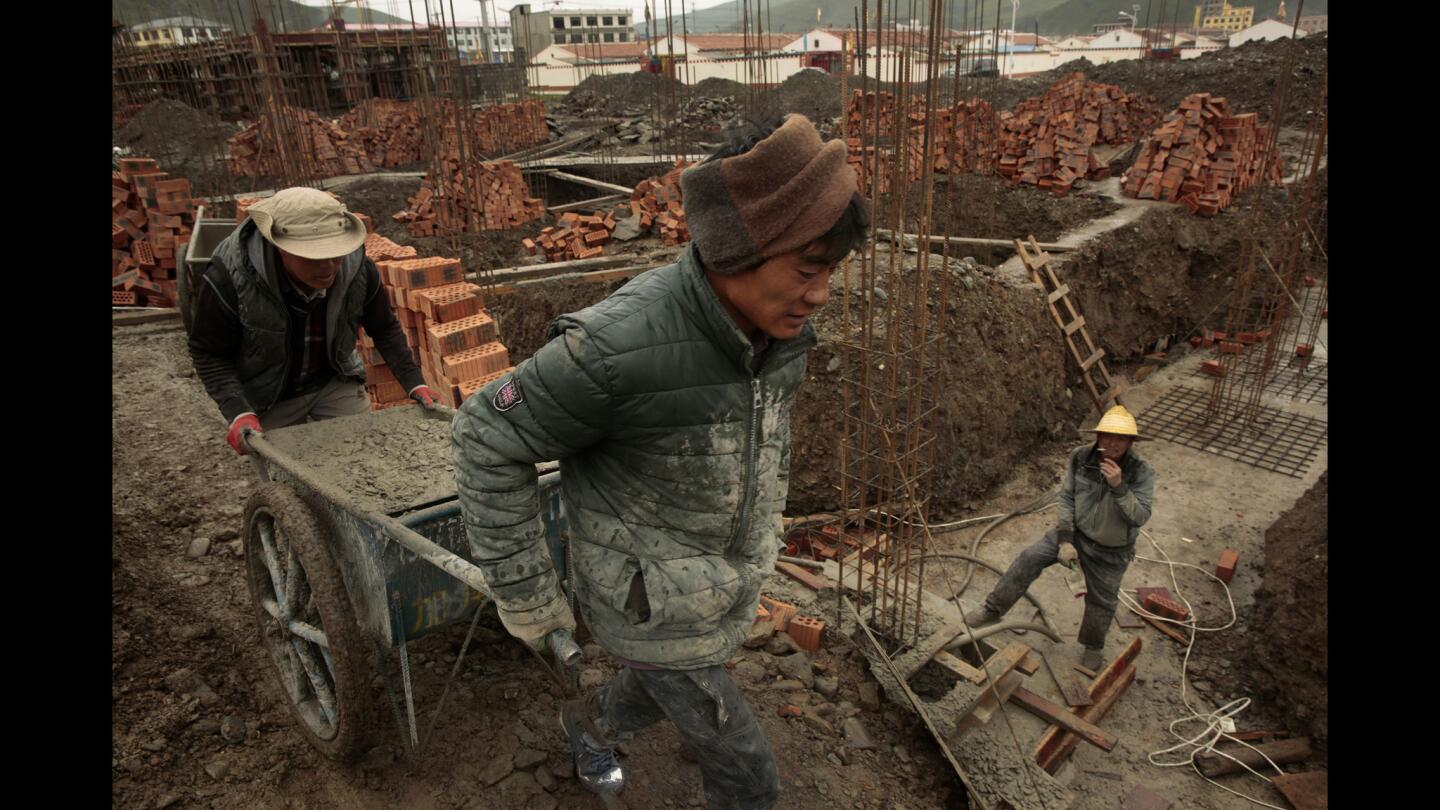
Liu Young, 41, toils as a construction worker on a home-building site in Jiuzhi City, China.
(Carolyn Cole / Los Angeles Times)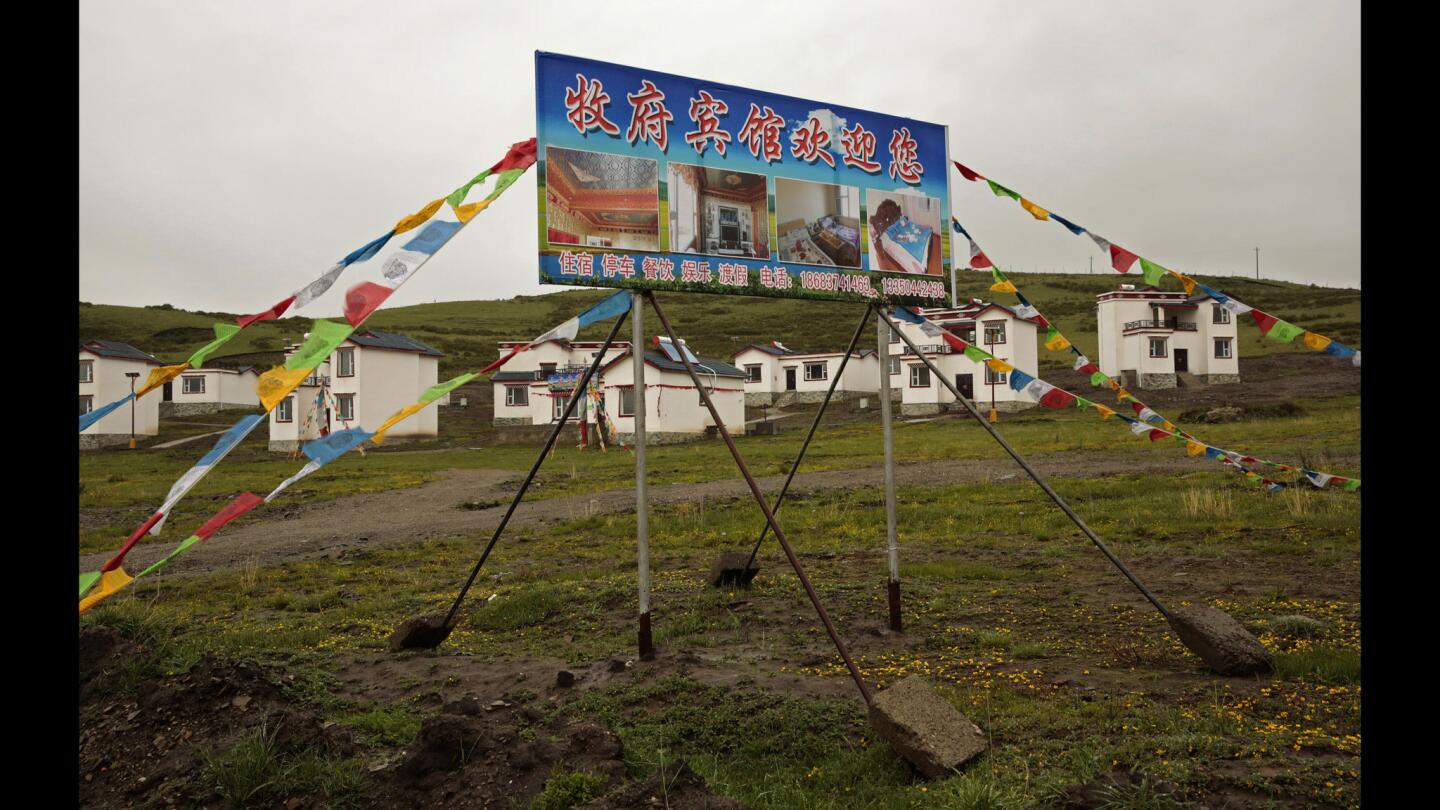
A new housing development is promoted in Aba.
(Carolyn Cole / Los Angeles Times)Advertisement
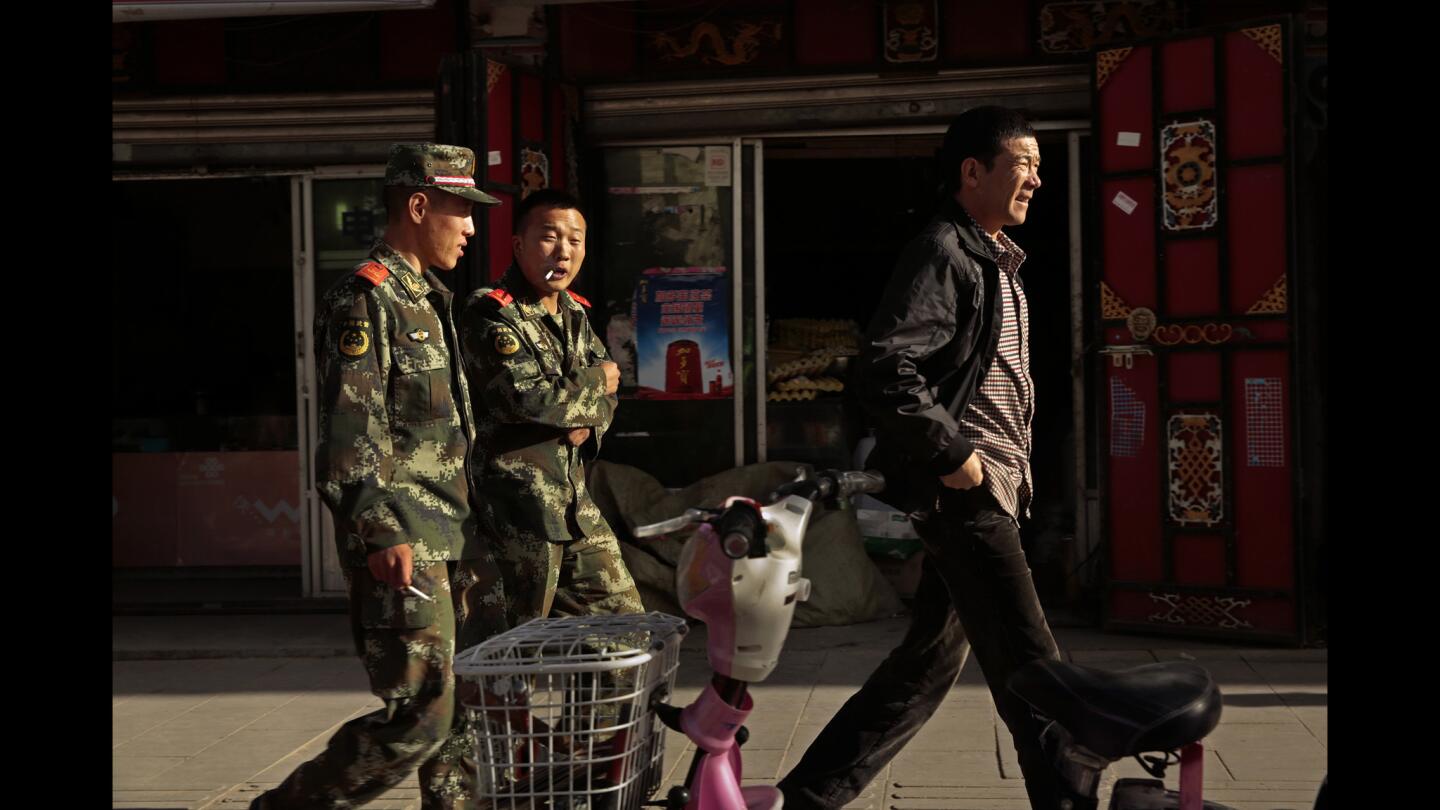
Chinese soldiers in downtown Aba.
(Carolyn Cole / Los Angeles Times)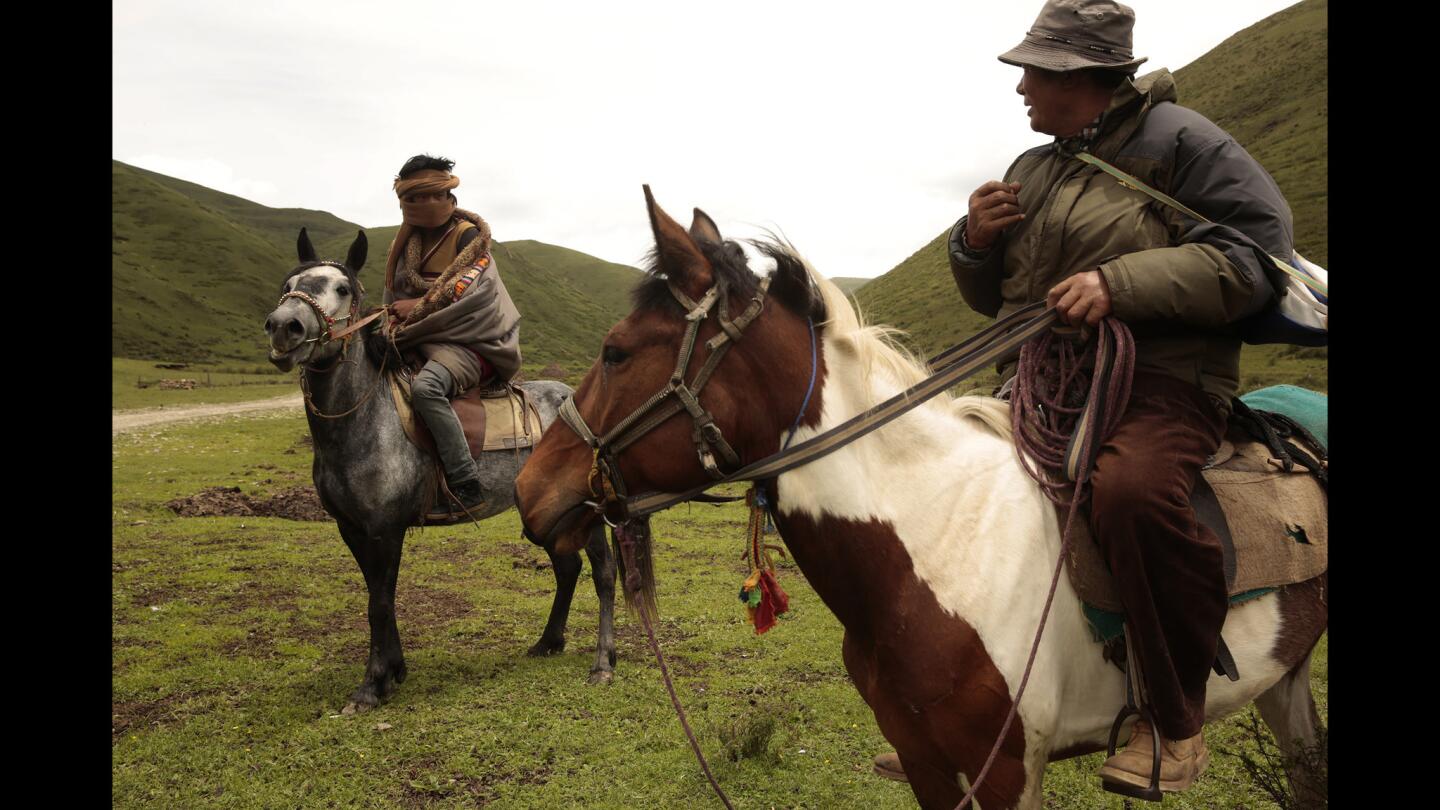
Ze Huajia, left, and Djuko ride in Meiruma village, outside Aba. Despite the Chinese government’s efforts to settle nomads, many continue to pursue their traditional lifestyle.
(Carolyn Cole / Los Angeles Times)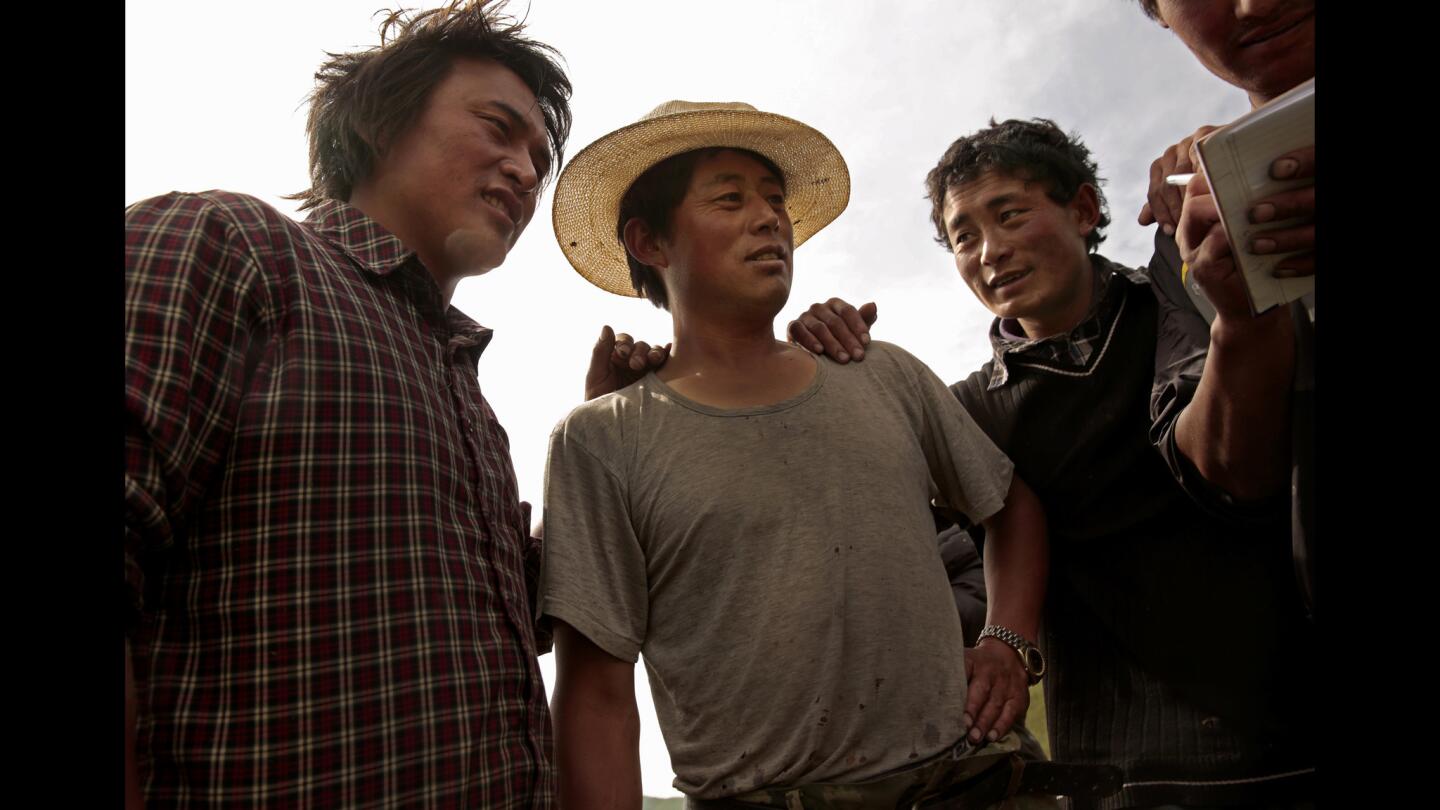
Tibetan ranchers gather in Aba to vaccinate their yaks in a corral recently built by the Chinese government.
(Carolyn Cole / Los Angeles Times)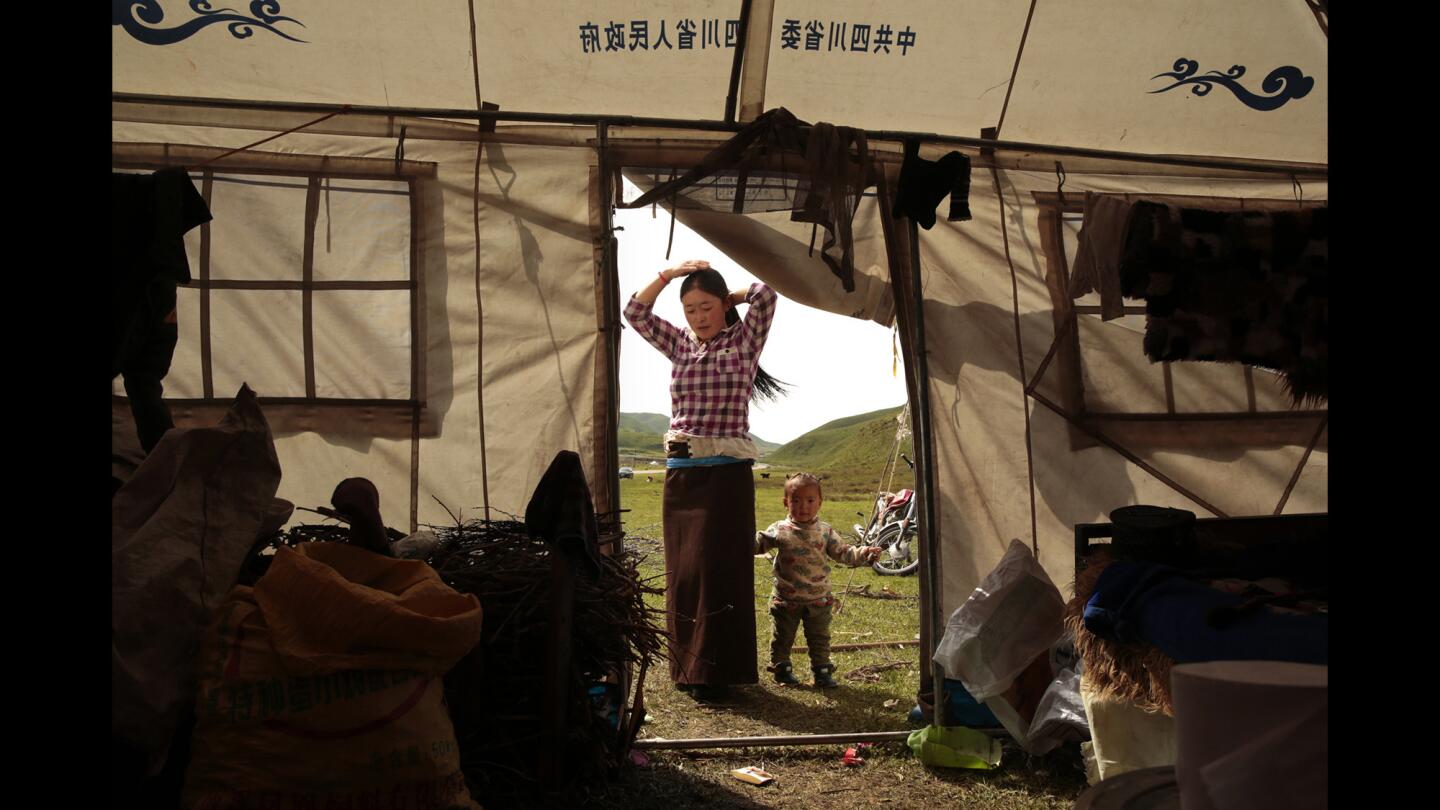
Outside the town of Aba, government-issued plastic tents are now more prevalent than the bulkier traditional tents made of black felt.
(Carolyn Cole / Los Angeles Times)Advertisement
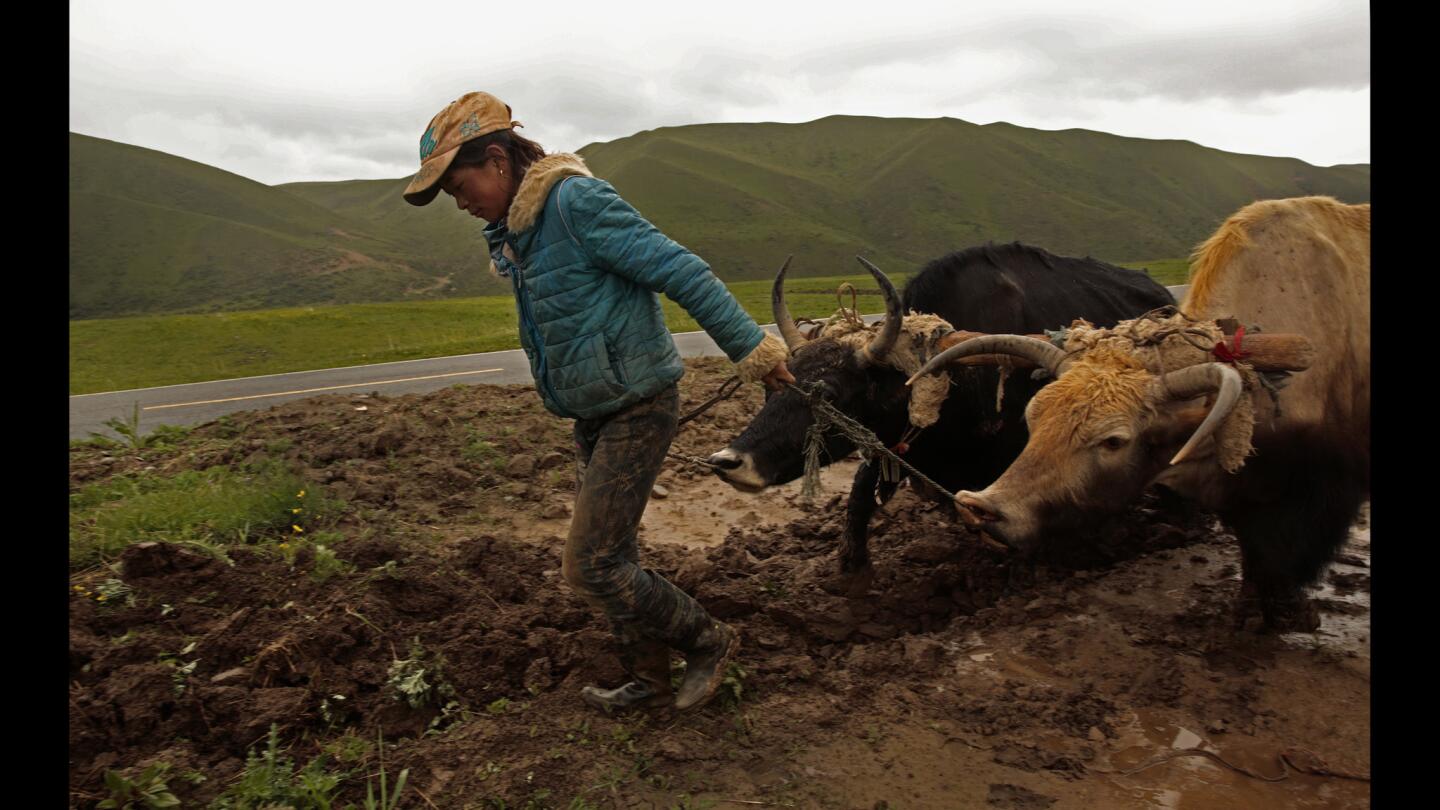
A girl guides yaks as they plow a field near Aba.
(Carolyn Cole / Los Angeles Times)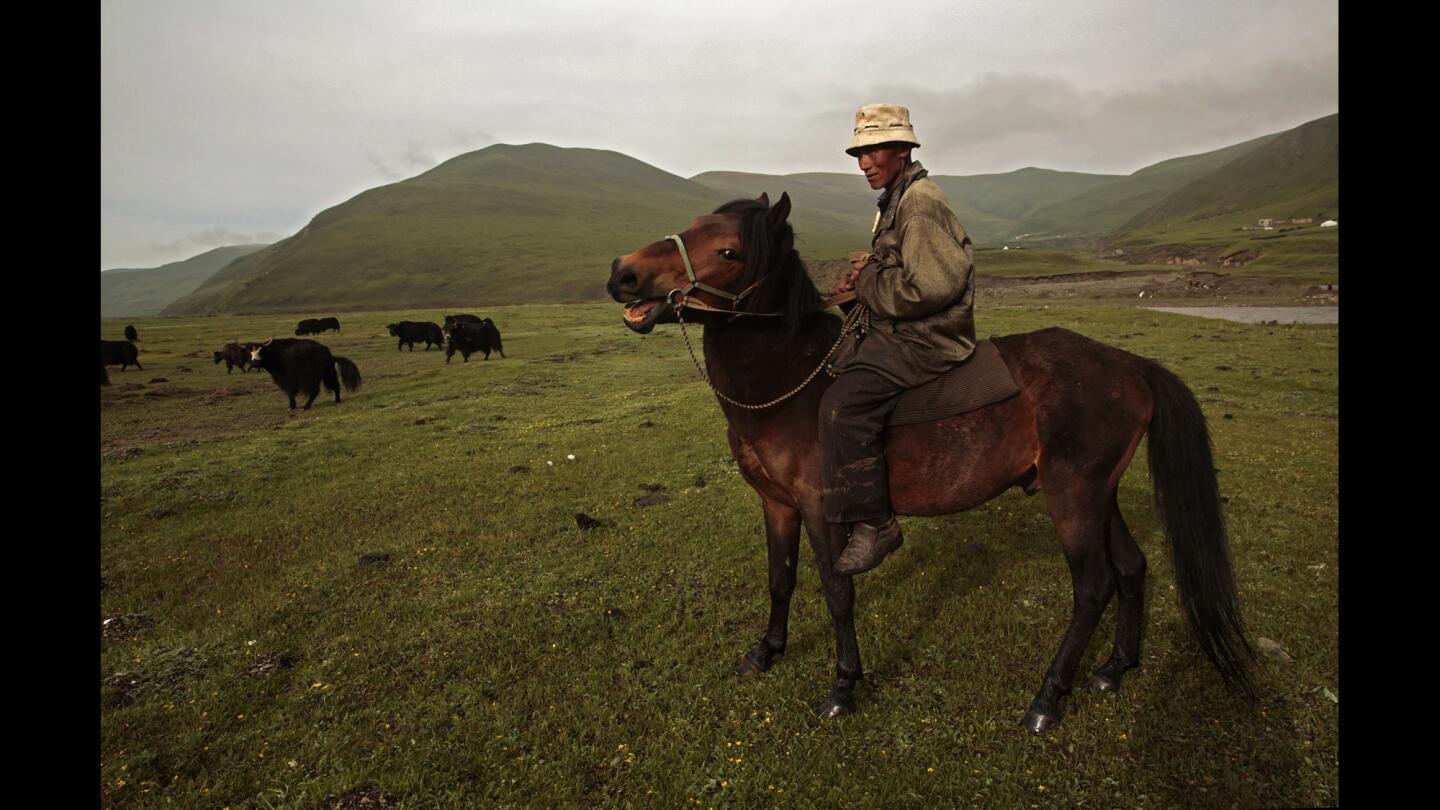
A man herds his yaks in Aba prefecture. The local government has given out tents, as well as lumber to build pens for yaks, and freed up grant money for Tibetans to make additions to their homes.
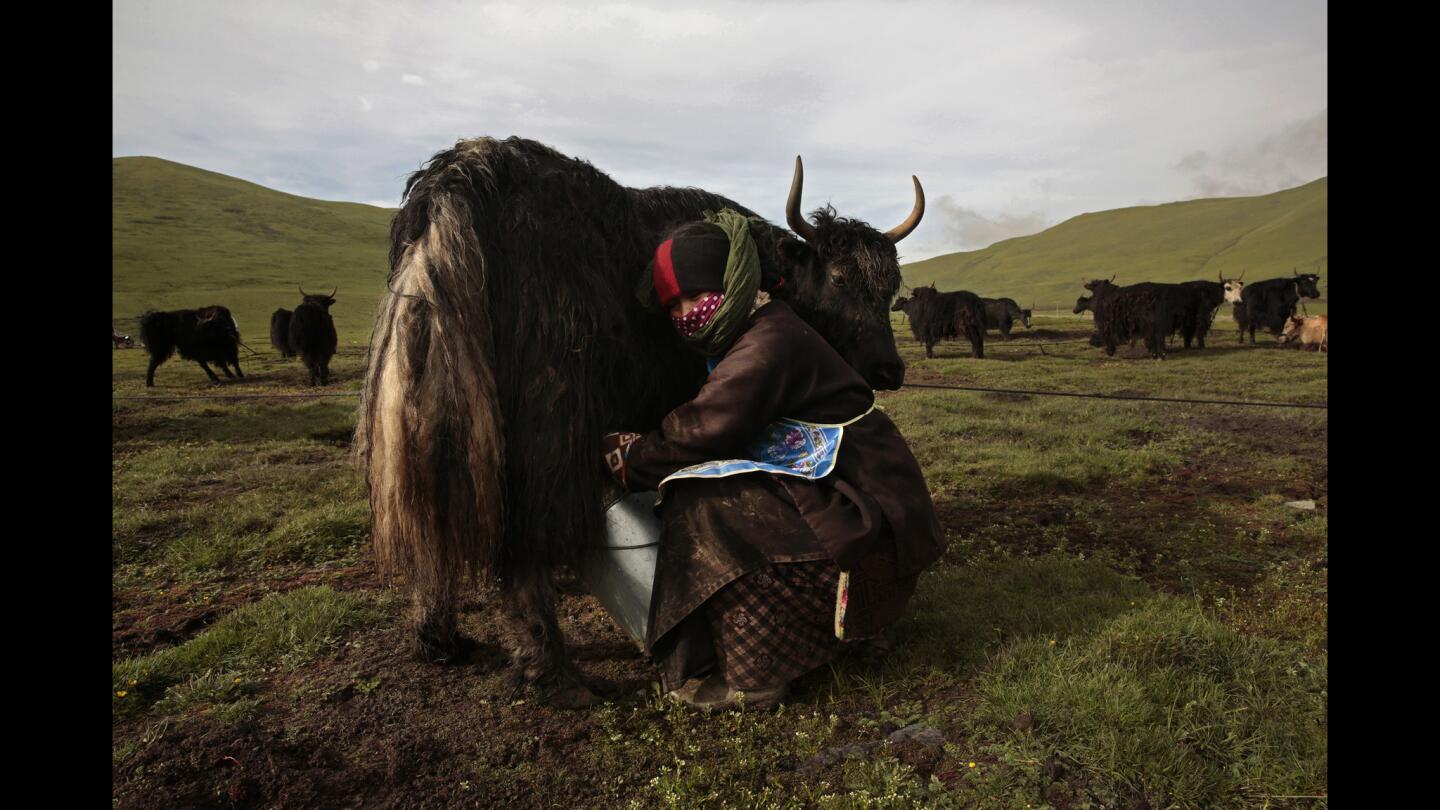
A woman milks a yak.
(Carolyn Cole / Los Angeles Times)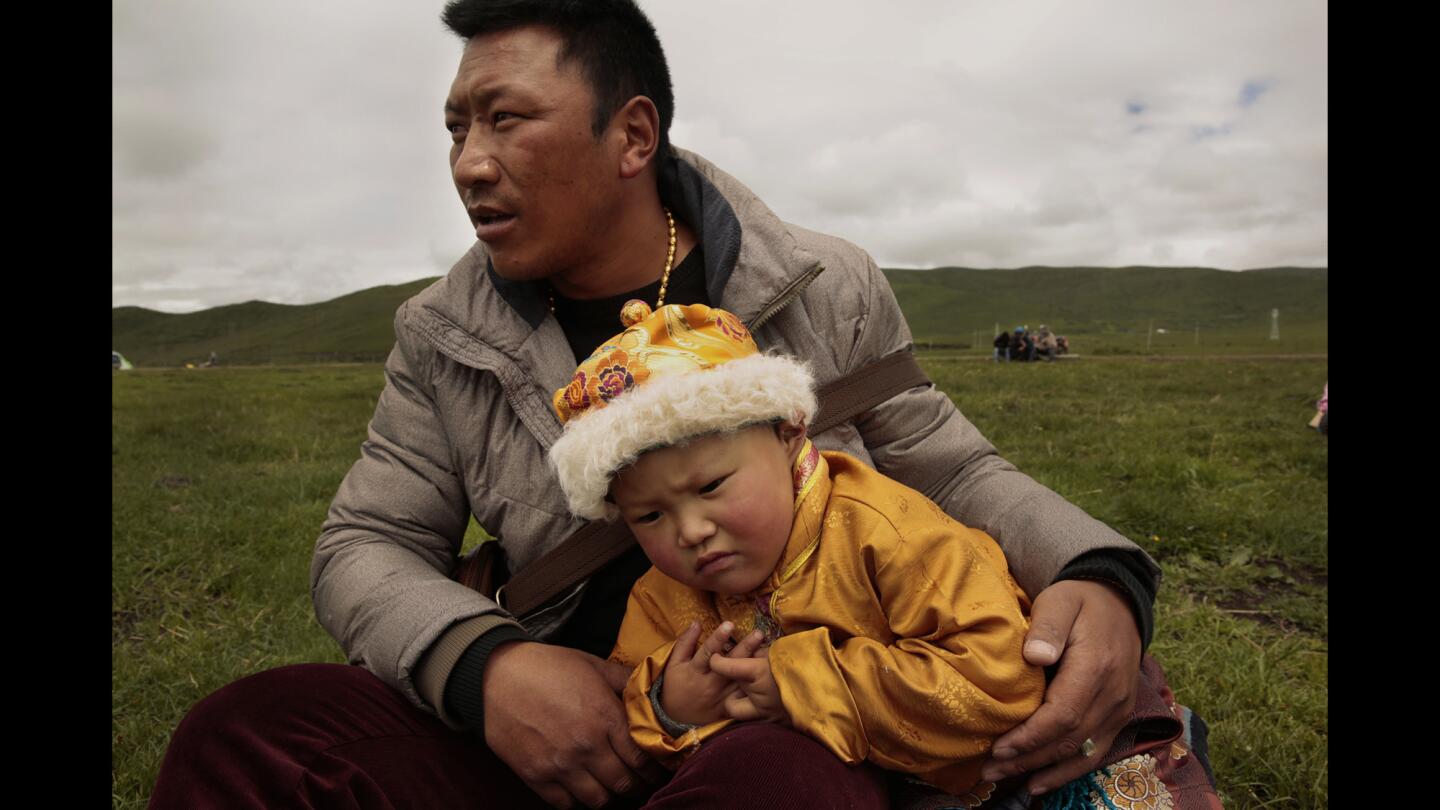
Kezha, 37, and his son Man Ma Da Zhen, 2, attend a prayer meeting in the town of Anqu.
(Carolyn Cole / Los Angeles Times)






